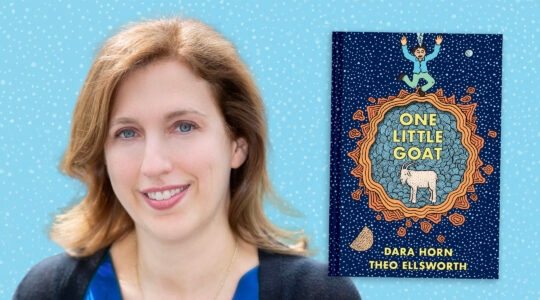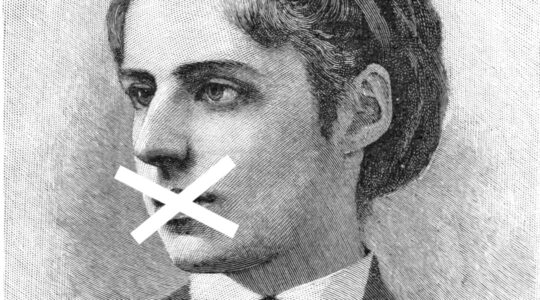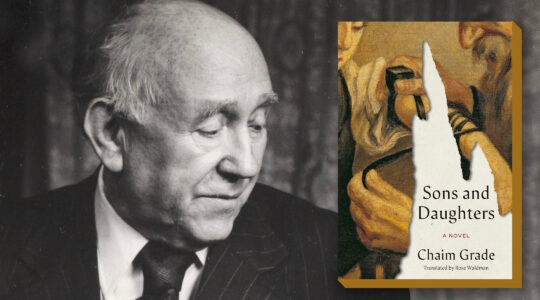The findings of the recent study of American Jews by the Pew Research Center have generated a lot of ink, not the least in responses from Jewish religious movements. We have heard the Orthodox expressions of the Church Triumphant. We have witnessed the scurrying for cover on the part of some other groups. In the Conservative world, a number of the movement’s leaders have offered either aggressive programming to counter the movement’s decline, or vigorous cheerleading.
But neither is the answer. Unfortunately, long-standing disabilities are inherent in Conservative Judaism.
The No. 1 question facing Conservative is this: How long will the rabbis and the Jewish Theological Seminary (JTS), the flagship institution of the movement, hold the line on intermarriage. If there is one thing about the Conservative movement that cannot be said of Reform and secular, it is that the boundary between Jew and non-Jew is clear and strong. In terms of policy, is the Conservative movement prepared to live with declining numbers, and not become like Reform, in which Jewish distinctiveness is embattled? (The question for Reform is more perilous: In any Reform temple, it is difficult to tell who is a Jew and who is not. Can such a movement survive?)
But intermarriage is not the fundamental question. There are five basic issues that have long plagued Conservative Judaism, and that underlie the weakness of the movement.
First, the “face” of the Conservative movement is changing. The numbers are striking. The data from the Pew study, which report that a mere 18 percent of American Jews identify with Conservative Judaism, follow on the heels of the 1990 and 2002 National Jewish Population Surveys, which revealed that the percentage of Jewish households affiliated with a Conservative synagogue dropped 10 percentage points over 10 years, from 43 percent in 1990 to 33 percent in 2000, with further decline over the past decade. (Further, although Orthodox Jews constitute the smallest of the three major denominational movements, they are much younger, on average, and tend to have much larger families than the overall Jewish population.)
In some measure, the declining population of Conservative Jews has been replaced by packets of energy — independent synagogues and “congregations of renewal,” many of which come out of a Conservative base, which is the leader in the “post-denominational” phenomenon. The problem is that the number of these “congregations of renewal” is far outnumbered by those in decline.
None of this would be terrible were it not for the second problem — the age-old dilemma of the disparity between the rabbis, who are observant (Shabbat, kashrut), and the people in the pews, who are not. This gap points up the movement’s ambiguous relationship to Jewish normative practice. Movement leaders say that they are “a halachic movement,” but relatively few Conservative Jews lead halachic lives. In survey after survey of Conservative Jews, 70 to 80 percent report not keeping kosher.
Third, the institutions of Conservative Judaism — the United Synagogue of Conservative Judaism, its congregational arm, and the Rabbinical Assembly, its rabbinic arm — were decades ago deliberately created as weak bodies in order to protect the hegemony of JTS over the movement. They remain weak today. In contrast, in Reform, the history was the opposite: the Reform seminary — the Hebrew Union College — and the Central Conference of American Rabbis were created by the congregational body, the Union of American Hebrew Congregations (today the Union for Reform Judaism, URJ), a powerful body indeed in the 19th century and remaining strong into the 21st. The URJ and the CCAR, with their powerful public-affairs arm based in Washington, D.C., the Religious Action Center, have an impressive impact.
The institutional weakness of Conservative Judaism relative to the other religious movements has not been addressed by the movement’s leaders. The result is that the movement has not been a “voice” on public affairs in the ways in which Reform and Orthodox have been. “Me-too-ism” has all-too-often been the Conservative response in the public-policy arena.
Fourth, the question of the content of Judaism, and of the Jewish Theological Seminary. One thing that JTS has long stood for is the academic content of Judaism — critical study of Tanach (Bible) and textual analysis of Talmud — for which the Seminary is justly celebrated. This is important, but there has to be more to a movement than academic content, however vital that content might be. The academic substance needs to speak to the amcha (people) — and it doesn’t. And lest we forget, JTS, the lodestone of the movement, is not what it was in its heyday, the 1940s, ’50s and ’60s.
Finally, it is no secret that the Conservative movement may not be a unitary one for long; splintering has long been a reality. The American Conservative synagogues; the Jewish Theological Seminary (many maintain that JTS represents a “movement” separate from that of the shuls); the Masorti in Israel (which looks more like the old Modern Orthodox in America); the West Coast seminary, the Ziegler School of Rabbinic Studies; the Union for Traditional Judaism — which will emerge as the “Conservative” voice?
And, as a practical matter, there is a larger question tied to contemporary demographics: Will Conservative shuls outside of the big cities disappear in the face of intermarriage pressure or become enfolded in existing Reform congregations, leading to a smaller, leaner and perhaps more vibrant movement?
As an Orthodox Jew, I would view the disappearance of the Conservative movement as a disaster for American Jewry, both religiously and communally.
In the world of fourth-century BCE Greece, Demosthenes, the greatest orator of all time, saw the new threat from war-like Macedonia, and deplored what had happened to Greece in the aftermath of the wars between Athens and Sparta a century earlier: a deterioration of the community of common interest and a failure to respond to challenges to the polity.
Modern parallels are not hard to find.
Jerome Chanes is the author of four books on American Jewish public affairs and history.
The New York Jewish Week brings you the stories behind the headlines, keeping you connected to Jewish life in New York. Help sustain the reporting you trust by donating today.




